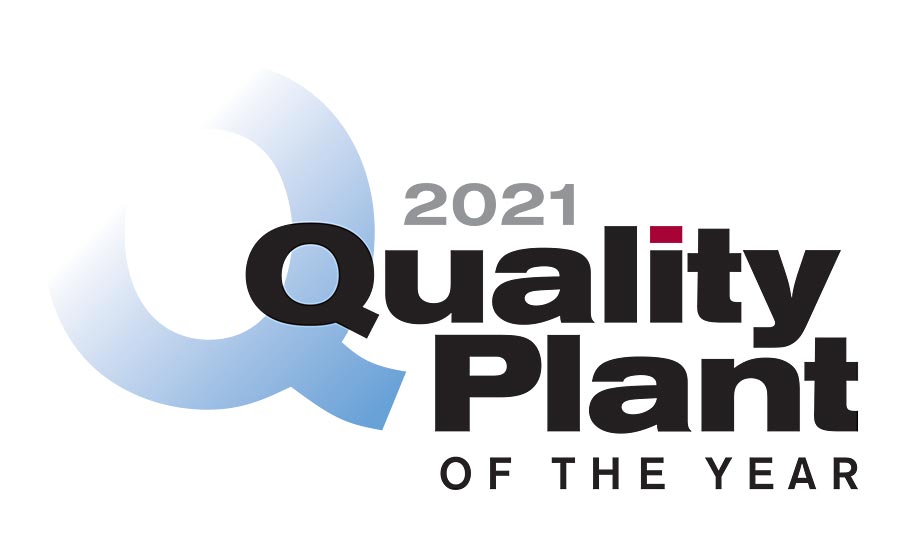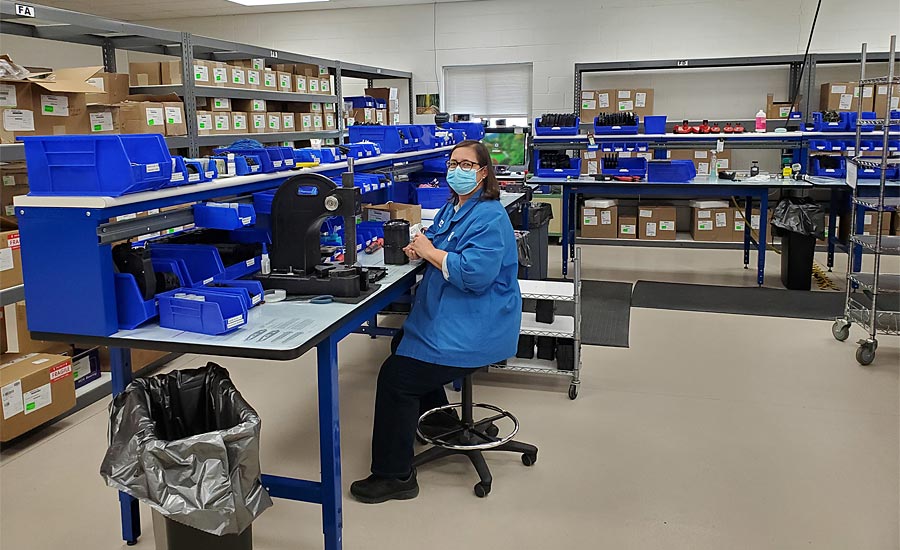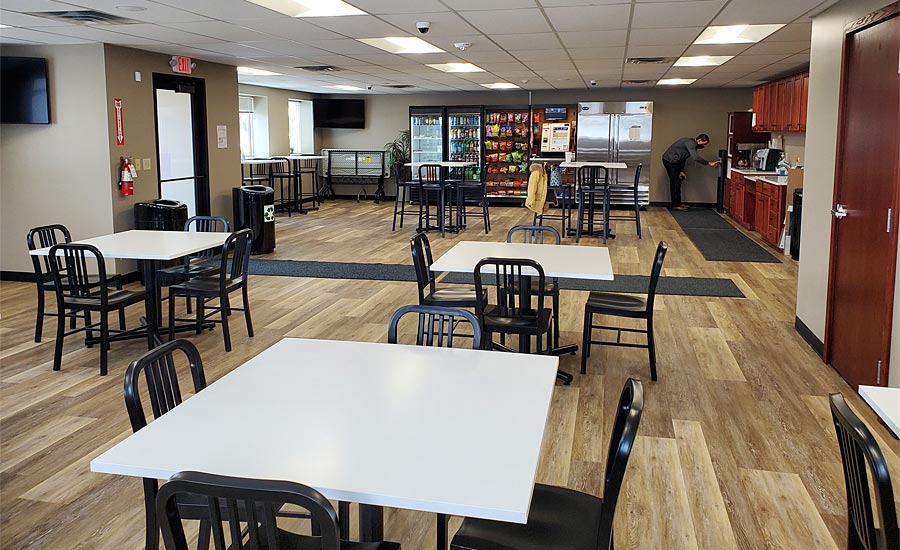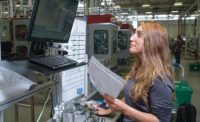The single most important thing manufacturing leaders can do to engage their employees is to share the ‘why’ behind their daily work, says Kathleen Skarvan, CEO at New Prague, MN-based Electromed—Quality’s 2021 Plant of the Year.
“I was once told that a consultant is someone who is hired to go around and ask the employees questions. They write down all the answers and make a presentation to management and are perceived as brilliant,” Skarvan says. “Save your money. Ask your employees directly and get them involved.”

It helps that Electromed’s ultimate ‘why’ is easy to support. The nearly 30-year-old company manufactures The SmartVest—a device that helps patients with compromised pulmonary function to breathe more easily. Working at Electromed means having an “unwavering passion for patients,” Skarvan says, a cause that motivates staff enough to truly impact quality.
“As you talk to team members throughout the organization you will hear a recurring theme: ‘It feels good knowing that what we do makes a difference in a person’s life,’” Skarvan says. “With that engagement comes a recognition of the importance of delivering high-quality services and a high-quality product.”
It also drives continuous improvement, both on behalf of employees and leadership, Skarvan adds. When employees are tuned in, they are driven to do their best. And leaders play a key role in maximizing that. “When staff see opportunities, they speak up; when they speak up—and you listen—you have the opportunity get better,” she says.

Electromed, Inc., Our 2021 Quality Plant Of The Year
A conversation with Electromed’s CEO Kathleen Skarvan, and Gregory Spurlock, Sr. Director of Regulatory and Quality, for Electromed, this year’s Quality Plant of the Year.
Bigger, Better, Faster, Stronger
Electromed started out with a staff of 15 employees who worked in a facility totaling 5,000 square feet. While their quality efforts still met ISO 9001 and other stringent requirements, they used manual, paper-based systems, and each employee wore multiple hats. Year after year, the company grew, due to both its culture and the launch of the SV2100 SmartVest Airway Clearance System in 2006, a new model of its classic device that required its own assembly line. Today, Electromed boasts 120 employees and operates out of 24,000 square feet of dedicated space. It uses Lean manufacturing principles and, more specifically, the Entrepreneurial Operating System, which provides a metrics-driven framework for an engaged and accountable workforce.

The company’s growth enabled it to implement dedicated lines for assembly, test, packaging, shipping, and inventory, which ushered in a focus on continuous improvement in each of those areas. As Electromed evolved, it hired and trained staff on regulatory and quality systems, policies and procedures as part their onboarding. It also upskills current employees on a continuous basis, covering everything from quality system processes as well as manufacturing work instructions. And, as always “A focus on not only what to do, but why it’s important, is a key aspect of our training,” Skarvan says.

The approach has paid off. In 2008, during a cross-functional continuous improvement project, Electromed reviewed its material flow and work cell layout. Staff found considerable waste related to material movements as components to finished devices moved over the same floor space multiple times. In a presentation to management, staff illustrated a plan to improve material flow, address existing space issues and relocate incoming inspection to be at the point of entry.
As a result, Electromed strategically shifted its manufacturing, engineering and shipping departments into more appropriate workspaces, and streamlined material flows to eliminate most of the wasted movement.
“It was a great example of how cross functional teams can work together to identify improvements that can have positive impact for everyone,” says Skarvan. “As regulatory requirements have evolved, our focus on continuous improvement has broadened to all functions of the organization as well as improvements to our quality system.”
Persevering Through COVID-19
Navigating a pandemic is the biggest challenge that Electromed has ever faced, Skarvan says. Because COVID-19 is primarily a respiratory virus and because Electromed serves patients with lung function issues, the company faced extraordinary pressure to keep up with demand while managing its own safety.
Fortunately, it was quick to the uptake. In February 2020 Electromed planned to ensure the continuity of its supply chain, establish guidelines for safely and remote work, and geared up its inventory in anticipation of an increase in patient needs.

As the virus upended the world in the very same weeks, this overhaul took courage, Skarvan says.
“Our team members responded so positively, embraced these changes, and continued to focus on the patients who benefit from SmartVest,” Skarvan says. As a result, Electromed experienced no material disruption to its business. And with the exception of a three-month furlough for 10 team members, Electromed continued to employ all its staff.
“There is no playbook for a business [in a pandemic] and, making the situation even more challenging was the ever-evolving knowledge and information regarding the virus: how it spreads, how to treat people, federal and state mandates and determining best practices based on your business model,” Skarvan says.
Even without guidance, Electromed quickly initiated safe-at-work policies and purchased equipment to accommodate remote employees, which comprised about 50% of staff. Skarvan and other leaders communicated with employees frequently, which Skarvan says was critical to sustaining momentum.
“Our team members put their trust in me and our leadership team, and I believe that trust helped keep the organization together and thriving even during the most challenging months,” she said.
Electromed first prioritized employee safety, tailoring its approach to individuals’ potential for exposure as well as their risk to the company. Leaders formed an executive COVID response team to address, on a weekly basis, any updates and developed customized action plans for remote employees, office staff and operations employees.
For instance, Electromed adjusted sales metrics and trained direct sales staff, who faced closed doors, to visit clients virtually. Operations staff increased cleaning in all common areas, changed schedules and reconfigured work centers to allow for social distancing, hand sanitizers and masks. The company contacted key suppliers to understand their contingency planning: Were there concerns from a supply chain perspective that needed to be addressed? How would the company mitigate any concerns? Finally, Electromed implemented a plan to increase the amount of finished goods and raw material it would carry as a key risk-mitigation strategy.
It wasn’t always easy. For example, procured personal protective equipment, including items as basic as hand sanitizer, was initially difficult to find. But the company persevered.
“Overall, we are extremely proud of our team members for their ability to embrace change,” Skarvan says.
As the pandemic ebbs on, “time will tell if we bring everyone back into the office,” Skarvan says.
Fortunately, remote work appeals to much of Electromed’s team, and a partially remote workforce may make it easier to recruit future staff. With so many employees working from home, the company could reallocate newly empty space for production. Lastly, the pandemic has prompted the company to modify its cross-training, “providing additional depth in some areas where there otherwise may be a limited number of employees,” Skarvan says.
“It has been educational to see the pros and cons of working from home over the last nine months,” Skarvan says. “Certainly, we have been successful in providing high-quality service to our patients, meeting monthly goals and objectives. Team meetings and personal engagement have been areas that are a challenge, and we will have to determine if and how we might address those in a pure work from home scenario. I think this will be an area of focus likely over the next year and one that will involve weighing the needs of our team members and that of the business.”



